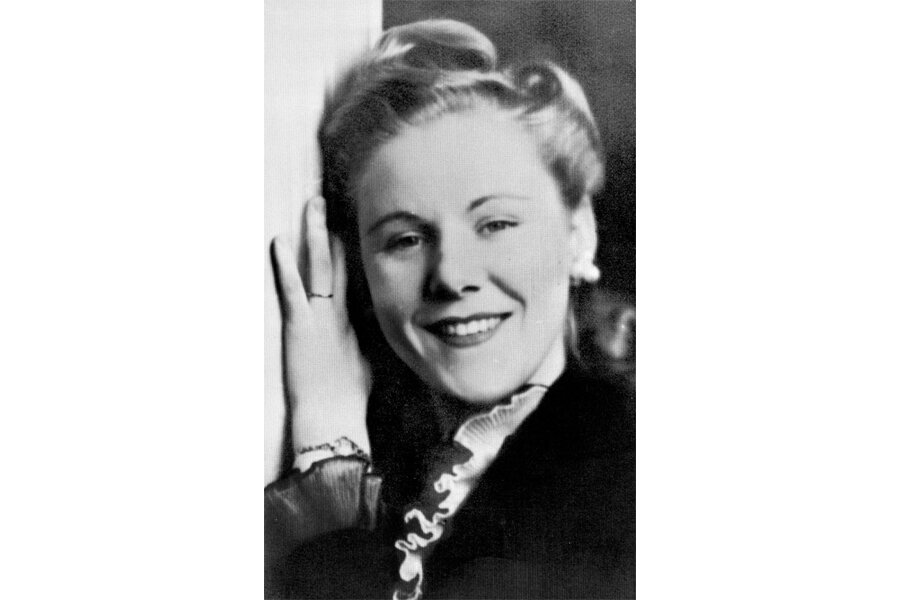Civil rights activist shot by Klansman will receive honorary degree
Loading...
| Detroit
For 24 years, a stone marker has stood along U.S. 80 in Alabama's Lowndes County, near the spot where Viola Gregg Liuzzo was fatally shot by Klansmen while shuttling demonstrators after the 1965 Selma-to-Montgomery voting rights march.
But in Liuzzo's hometown of Detroit, such public recognition is scarce. A wooden marker bearing her name sits on a fence beside a small neighborhood playfield. Last year, an exhibit in Lansing included Liuzzo among Michigan women who contributed significantly to civil rights.
That will change on April 10. Liuzzo's former school, Wayne State University, plans to award her an honorary doctor of laws degree. It's the first posthumous honorary degree in the 145-year-old school's history. Wayne State also will dedicate a tree or green space for Liuzzo.
Liuzzo's five children have been invited to the ceremony. Liuzzo's husband, Anthony Liuzzo Sr., died in 1978.
"I cried," Liuzzo's daughter, Mary Liuzzo Lilleboe, said of her reaction to Wayne State's decision. "It's the highest honor an educational institution can bestow on someone. It's the honor that's being paid to her. She's a civil rights giant."
Kim Trent, a member of Wayne State's Board of Governors, initially broached the idea a decade ago as president of Wayne State's black alumni organization. The school declined, citing its policy of not awarding posthumous degrees, Trent said.
"The truth of the matter is that Viola is worthy because she is deceased," Trent said. "She is a civil rights martyr. I understood there was something more important at stake."
Trent was elected to the same board in 2012, and recently took another run at recognition for Liuzzo. They passed the recommendation in February.
"My colleagues were like, 'Sure, we should do this,'" Trent said.
Liuzzo was a nursing student at Wayne State when she joined the civil rights movement. At the time of her death, the white, 39-year-old mother also was a member of Detroit's branch of the NAACP.
From her home, Liuzzo watched televised news reports of demonstrators being beaten by police in Selma on March 7, 1965, during the first attempt to march to Montgomery, a day that became known as "Bloody Sunday."
That march was followed two days later by another, abbreviated demonstration led by the Rev. Martin Luther King Jr. The Rev. James Reeb, a white Unitarian minister from Boston, was severely beaten that night and later died. An all-white jury acquitted three white men of murder charges in Reeb's death.
Just over two weeks after Reeb's death, Liuzzo too was dead, struck in the head by shots fired from a passing car. Her black passenger, 19-year-old Leroy Moton, was wounded but survived by pretending to be dead. Four Ku Klux Klan members were arrested, and an all-white, all-male jury acquitted three of them of murder. Those same three were later convicted of federal charges in Liuzzo's death. The fourth assailant was granted immunity and placed in the federal witness protection program.
Lilleboe said she was 17 when her mother quietly drove to Alabama the weekend before the third attempt to march from Selma to Montgomery, planned for March 25.
"If she saw wrong and she couldn't right it, she took action," said Lilleboe. "She always told us the story that she was treated badly because she was poor, but the 'little black kids were treated worse.'"
Liuzzo didn't reveal where she was going until well after she left, because she didn't want her husband to stop her, Lilleboe said. She did, however, contact her family regularly by phone.
"She called and she was rather jubilant because the march had made it," Lilleboe recalled. "She was coming home. My brothers picked up little pretend signs and started marching around singing 'We Shall Overcome.'
"About midnight, dad got a phone call and they said 'your wife ... there has been an accident.' We knew she had been murdered."
Law professor Peter Hammer, director of the Damon J. Keith Center for Civil Rights at Wayne State, said non-blacks who fought to dismantle Jim Crow segregation "were subject to the same vitriol" aimed at blacks, "and in some respects — even more so."
"For a white woman to cross the line took even more courage and was probably subject to more hatred," Hammer said. Also, he said, there is a tendency, in telling civil rights history, to sideline roles played by women of all races.
The Alabama marker honoring Liuzzo was erected by the Women of the Southern Christian Leadership Conference in 1991. At the Civil Rights Memorial in Montgomery, Liuzzo is the only white woman honored among the martyrs.
After Liuzzo's death, her family endured a cross burning and hate mail at their Detroit home. Her children were harassed at school. Liuzzo's husband hired armed guards for protection. A smear campaign, engineered by the FBI, hinted that Liuzzo used drugs and had illicit relationships with black men.
Liuzzo's family filed a $2 million negligence claim against the federal government in 1977, saying the FBI knew ahead of time that Liuzzo's killers planned to commit violence and did nothing to stop them.
The government refused to negotiate that claim. The family filed a lawsuit that went to non-jury trial in federal court in Ann Arbor, Michigan, in 1983, and was dismissed.
"What's nice about what's taking place now is that nobody is remembering the lies," Hammer said. "People are remembering her life and courage."
Lilleboe, who now lives in Oregon, is proud of her mother's enduring legacy. She has traveled to Selma for "Bloody Sunday" commemorations for the past 11 years, including the 50th anniversary earlier this month.
"They embraced me with their whole hearts ... because I'm my mother's daughter," Lilleboe said. "When I see the difference in their eyes I am so proud of my mother."







